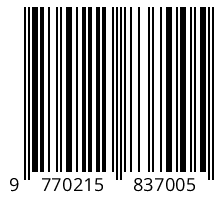MEMBANGUN JEJARING PENGETAHUAN (Mengupayakan PTAI menjadi Learning Organization (LO))
DOI:
https://doi.org/10.18592/khazanah.v8i1.3017Keywords:
Learning organization, teknologi, partisipasi, perubahanAbstract
PTAI (Perguruan Tinggi Agama Islam) adalah lembaga pendidikan Islam yang telah lama berdiri dengan berbagai dinamikanya. Upaya lembaga ini untuk terus berbenah diri menjadi yang terbaik adalah dambaan orang. Mengupayakan PTAI untuk terus belajar dan menjadi organisasi belajar terus diupayakan berbagai kalangan intern dan ekstern organisasi ini. Dengan memadukan people (siapa lagi yang belajar selain manusia), process (belajar sebelum, selagi, dan setelah), dan technology (sebuah mesin penghimpun otomatis yang mudah diakses). Pada akhirnya keseluruhan praktik berbagi dapat dilakukan dengan menjangkarkan kegiatan pada orang-orang yang bersemangat menyelesaikan tugas. Juga terbentuk mental model pada setiap individu pada organisasi ini dapat men-shared ilmu pengetahuan dan perubahan.References
Hari Suminto. (t.th) Buku Pengantar Disiplin Kelima. Jakarta: Interaksara
Marquatd, Michael J. (1996). Building the Learning Organization. New York: MC-Graw-Hill.
Miarso, Yusufhadi. (2004) Menyemai Benih Teknologi Pendidikan. Jakarta: Pustekkom-DIKNAS.
Probst, G., S Raub, & Kai Romhart. (2000). Managing Knowledge: Building Blocks for Success. Chic ester: Wiley
Senge, Peter. (2000). School that Learn. New York: United
States of America.
Sitepu, B.P., (2008). Memimpin Organisasi Belajar. Jakarta: Bahan Kuliah S3 TP Universitas Negeri Jakarta
Walther, J.B. (1997). “A Longitudinal Experiment on Relational Tone in Computer-Mediated and Face to Face Interaction”, Proceedings of the Twenty-fifth Hawaii International Conference on System Sciences, Vol. IV, Los Alamitos, CA: IEEE Computer Society Press.
Wenger, E., et.al. (2002). Cultivating Communities of Practice.
Boston: Harvard Business Scholl Press.
Published
How to Cite
Issue
Section
License
Authors who publish with this journal agree to the following terms:
- Authors retain copyright and grant the journal right of first publication with the work simultaneously licensed under a Creative Commons Attribution License that allows others to share the work with an acknowledgement of the work's authorship and initial publication in this journal.
- Authors are able to enter into separate, additional contractual arrangements for the non-exclusive distribution of the journal's published version of the work (e.g., post it to an institutional repository or publish it in a book), with an acknowledgement of its initial publication in this journal.
- Authors are permitted and encouraged to post their work online (e.g., in institutional repositories or on their website) prior to and during the submission process, as it can lead to productive exchanges, as well as earlier and greater citation of published work.

























